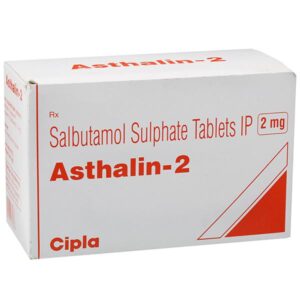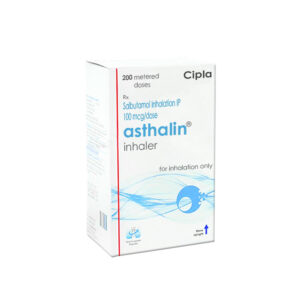What is this drug used for?
• It is used to open the airways in lung diseases where spasm may cause breathing problems.
• It is used to prevent exercise-induced breathing problems.
Frequently reported side effects of this drug
• Nausea
• Vomiting
• Tremor
• Sore throat
• Back pain
• Aches
• Pains
• Runny nose
Other side effects of this drug: Talk with your doctor right away if you have any of these signs of:
• Low potassium like muscle pain or weakness, muscle cramps, or an abnormal heartbeat
• Severe pulmonary disorder like lung or breathing problems like trouble breathing, shortness of breath, or a cough that is new or worse
• Chest pain
• Abnormal heartbeat
• Fast heartbeat
• Severe anxiety
• Severe headache
• Severe dizziness
• Passing out
• Vision changes
• Stevens-Johnson syndrome/toxic epidermal necrolysis like red, swollen, blistered, or peeling skin (with or without fever); red or irritated eyes; or sores in mouth, throat, nose, or eyes
• Painful urination
• Trouble urinating
• Signs of a significant reaction like wheezing; chest tightness; fever; itching; bad cough; blue skin color; seizures; or swelling of face, lips, tongue, or throat.
Note: This is not a comprehensive list of all side effects. Talk to your doctor if you have questions.
Medication Safety Issues
Sound-alike/look-alike issues:
Albuterol may be confused with Albutein, atenolol
Proventil may be confused with Bentyl, PriLOSEC, Prinivil
Salbutamol may be confused with salmeterol
Ventolin may be confused with phentolamine, Benylin, Vantin
Storage and Stability
Metered-dose inhalers (HFA aerosols): Store at 15°C to 25°C (59°F to 77°F). Do not store at temperature >120°F. Do not puncture. Do not use or store near heat or open flame.
Proventil HFA: Store with mouthpiece down.
Ventolin HFA: Discard when counter reads 000 or 12 months after removal from protective pouch, whichever comes first. Store with mouthpiece down.
Dry powder inhalers:
ProAir Digihaler, ProAir RespiClick: Store between 15°C and 25°C (59°F and 77°F). Avoid exposure to extreme heat, cold, or humidity. Discard 13 months after opening the foil pouch, or when the counter displays 0, whichever comes first.
Ventolin Diskus [Canadian product]: Store at ≤30°C (86°F). Keep in a dry place. Protect from frost and light. Diskus is nonrefillable and should be discarded after all doses have been administered.
Infusion solution [Canadian product]: Ventolin IV: Store at 15°C to 30°C (59°F to 86°F). Protect from light. After dilution, discard unused portion after 24 hours.
Nebulization solution: Store at 2°C to 25°C (36°F to 77°F). Do not use if solution changes color or becomes cloudy. Products packaged in foil should be used within 1 week (or according to the manufacturer’s recommendations) if removed from foil pouch.
Syrup: Store at 20°C to 25°C (68°F to 77°F).
Tablet: Store at 20°C to 25°C (68°F to 77°F).
Tablet, extended release: Store at 20°C to 25°C (68°F to 77°F).
Adverse Reactions
Incidence of adverse effects is dependent upon age of patient, dose, and route of administration.
Cardiovascular: Chest discomfort, chest pain, edema, extrasystoles, flushing, hypertension, palpitations, tachycardia
Central nervous system: Anxiety, ataxia, depression, dizziness, drowsiness, emotional lability, excitement (children and adolescents 2 to 14 years), fatigue, headache, hyperactive behavior (children and adolescents 6 to 14 years), insomnia, malaise, migraine, nervousness, pain, restlessness, rigors, shakiness (children and adolescents 6 to 14 years), vertigo, voice disorder
Dermatologic: Diaphoresis, pallor (children 2 to 6 years), skin rash, urticaria
Endocrine & metabolic: Diabetes mellitus, increased serum glucose
Gastrointestinal: Anorexia (children 2 to 6 years), diarrhea, dyspepsia, eructation, flatulence, gastroenteritis, gastrointestinal signs and symptoms (children 2 to 6 years), glossitis, increased appetite (children and adolescents 6 to 14 years), nausea, unpleasant taste (inhalation site), viral gastroenteritis, vomiting, xerostomia
Genitourinary: Difficulty in micturition, urinary tract infection
Hematologic & oncologic: Decreased hematocrit, decreased hemoglobin, decreased white blood cell count, lymphadenopathy
Hepatic: Increased serum ALT, increased serum AST
Hypersensitivity: Hypersensitivity reaction
Infection: Cold symptoms, infection
Local: Application site reaction (HFA inhaler)
Neuromuscular & skeletal: Back pain, hyperkinesia, leg cramps, muscle cramps, musculoskeletal pain, tremor
Ophthalmic: Conjunctivitis (children 2 to 6 years)
Otic: Otalgia, otitis media, ear disease, tinnitus
Respiratory: Bronchitis, bronchospasm (exacerbation of underlying pulmonary disease), cough, dyspnea, epistaxis (children and adolescents 6 to 14 years), exacerbation of asthma, flu-like symptoms, increased bronchial secretions, laryngitis, nasal congestion, nasopharyngitis, oropharyngeal edema, oropharyngeal pain, pharyngitis, pulmonary disease, respiratory tract disease, rhinitis, sinus headache, sinusitis, throat irritation, upper respiratory tract infection, upper respiratory tract inflammation, viral upper respiratory tract infection, wheezing
Miscellaneous: Accidental injury, fever
Rare but important or life-threatening: Anaphylaxis, atrial fibrillation, exacerbation of diabetes mellitus, gag reflex, glossitis, hyperglycemia, hypokalemia, hypotension, ketoacidosis, lactic acidosis, paradoxical bronchospasm, peripheral vasodilation, supraventricular tachycardia, tongue ulcer
–






